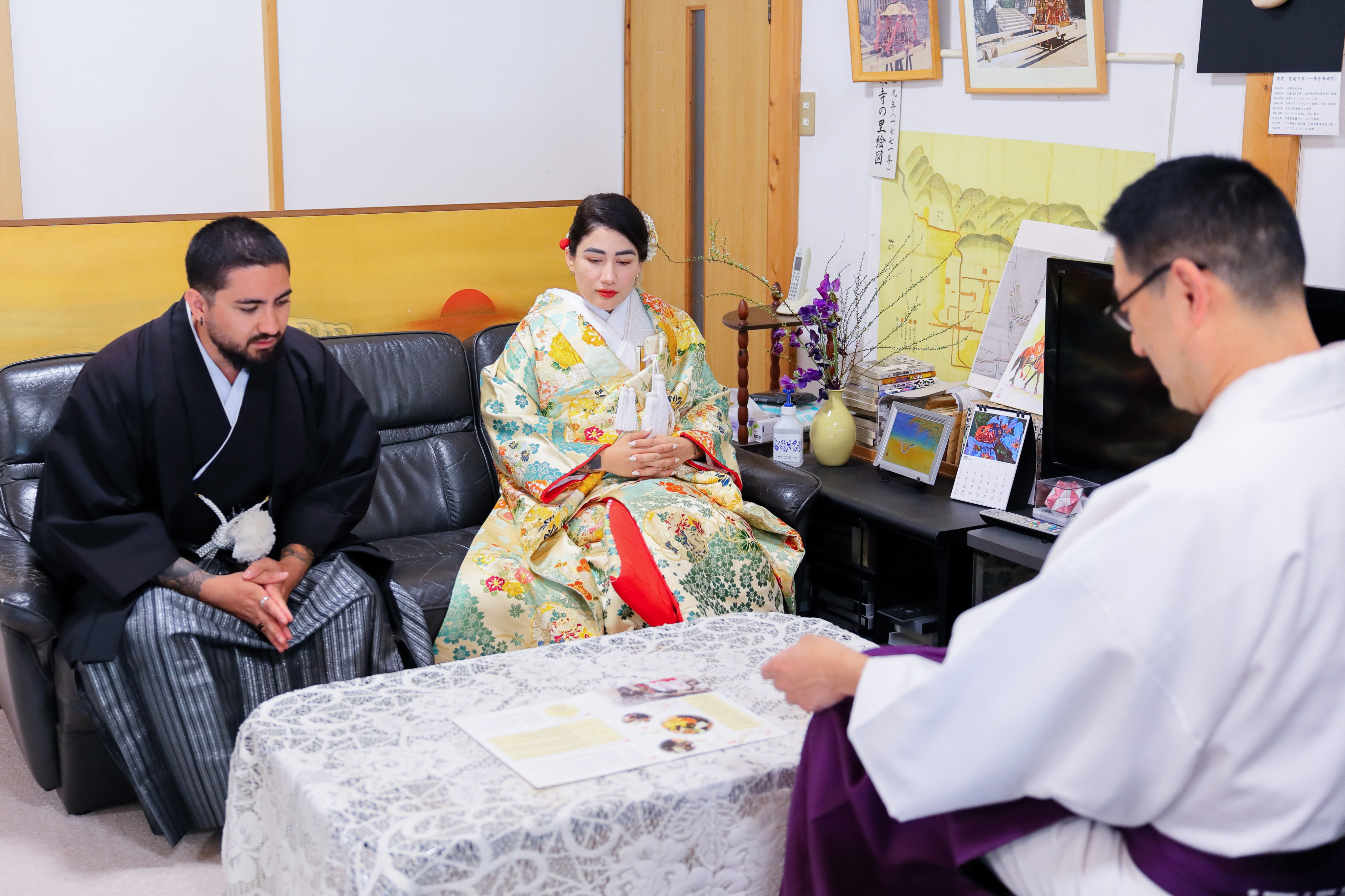About The Japanese Style Wedding Ceremony

Traditionally, the religious wedding ceremony is held in Shinto style at a shrine. A Shinto priest conducts the ceremony, which is visited by close family members and friends of the couple.
In the ceremony, the couple is purified, drink a little bit of sake, and the groom reads the words of commitment. At the end of the ceremony, symbolic offerings are given to the kami (Shinto deities). The couple is dressed in traditional kimono.
What to wear for the bride, groom
At a traditional Japanese wedding, the bride and groom usually wear Japanese wedding kimono. The bride wears a white wedding kimono called “shiromuku”
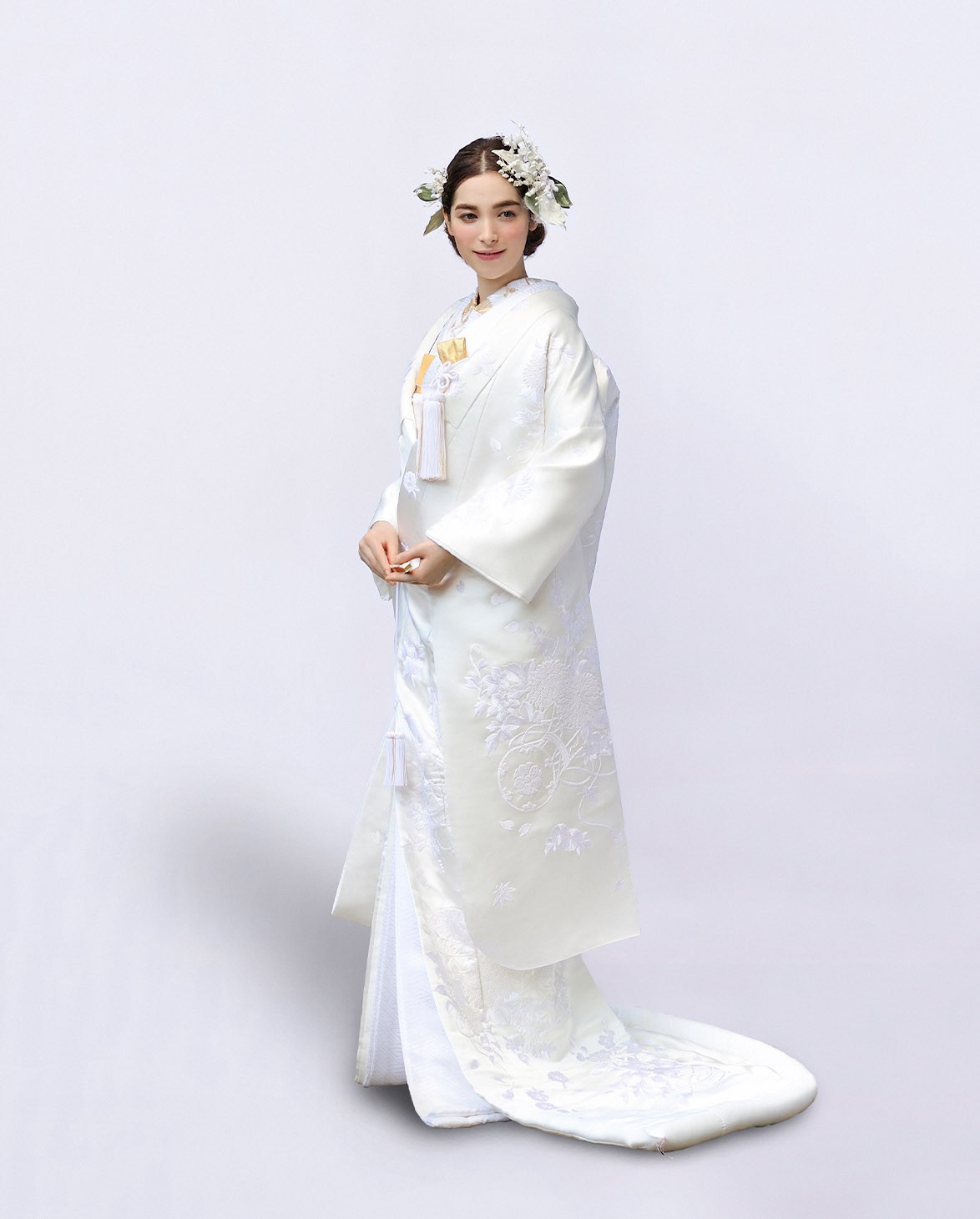

The groom wears kimono, hakama (trousers), and haori (overcoat), which are usually black or gray.
If you're planning on getting married Shinto-style, you have a kimono options as a bride including the shiromuku (white kimono), or iro-uchikake (colorful kimono). The most popular option for many couples is the colorful kimono, since they translate more vibrantly in photographs.
The Flow of the Wedding Day
On the morning of your wedding day, you will come to our wedding salon. There, you will change into your kimono and receive makeup and hair styling. (Our staff can speak English, so please request any makeup or hairstyle preferences in English.) Once you are ready, we will transport you to the shrine in our car.
Upon arrival at the shrine, you will greet the Shinto priest and wait in a room. The priest will explain the wedding ceremony process to you. (This explanation can also be provided in English.) When the time comes, the wedding ceremony will begin. A shrine maiden will come to escort you.
On your wedding day, English-speaking staff, a photographer, and attendants will assist you, so there is absolutely no need to worry. Please relax and enjoy your Japanese wedding ceremony.
“The process of a traditional Shinto wedding ceremony”
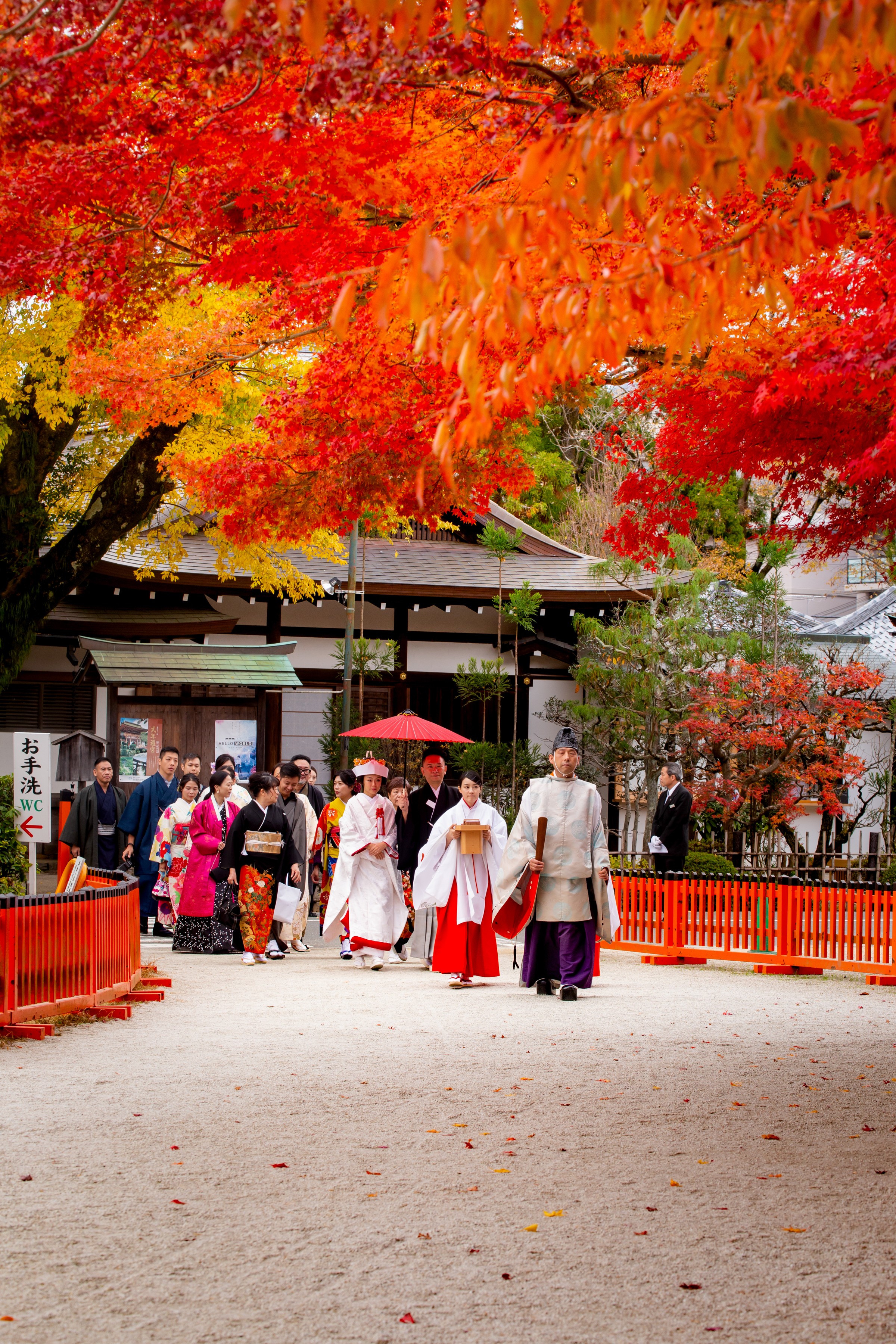
1.
Sanshin
参進の儀
Firstly, the groom, bride, and their families walk through the shrine grounds to the shrine, led by Shinto priests 神主 and miko 巫女 (shrine maidens). The gagaku performance that consists of 3 types of traditional Japanese flutes. Note that this isn't mandatory, but will be performed by the performers if hired. This ceremony is called sanshin (参進の儀).

2.
Purification Rite
Shubatsu 修祓
Before the ceremony, the Shinto priest performs the words of purification and purifies the groom and bride with hemp. During this time, everyone stands and bows their heads.
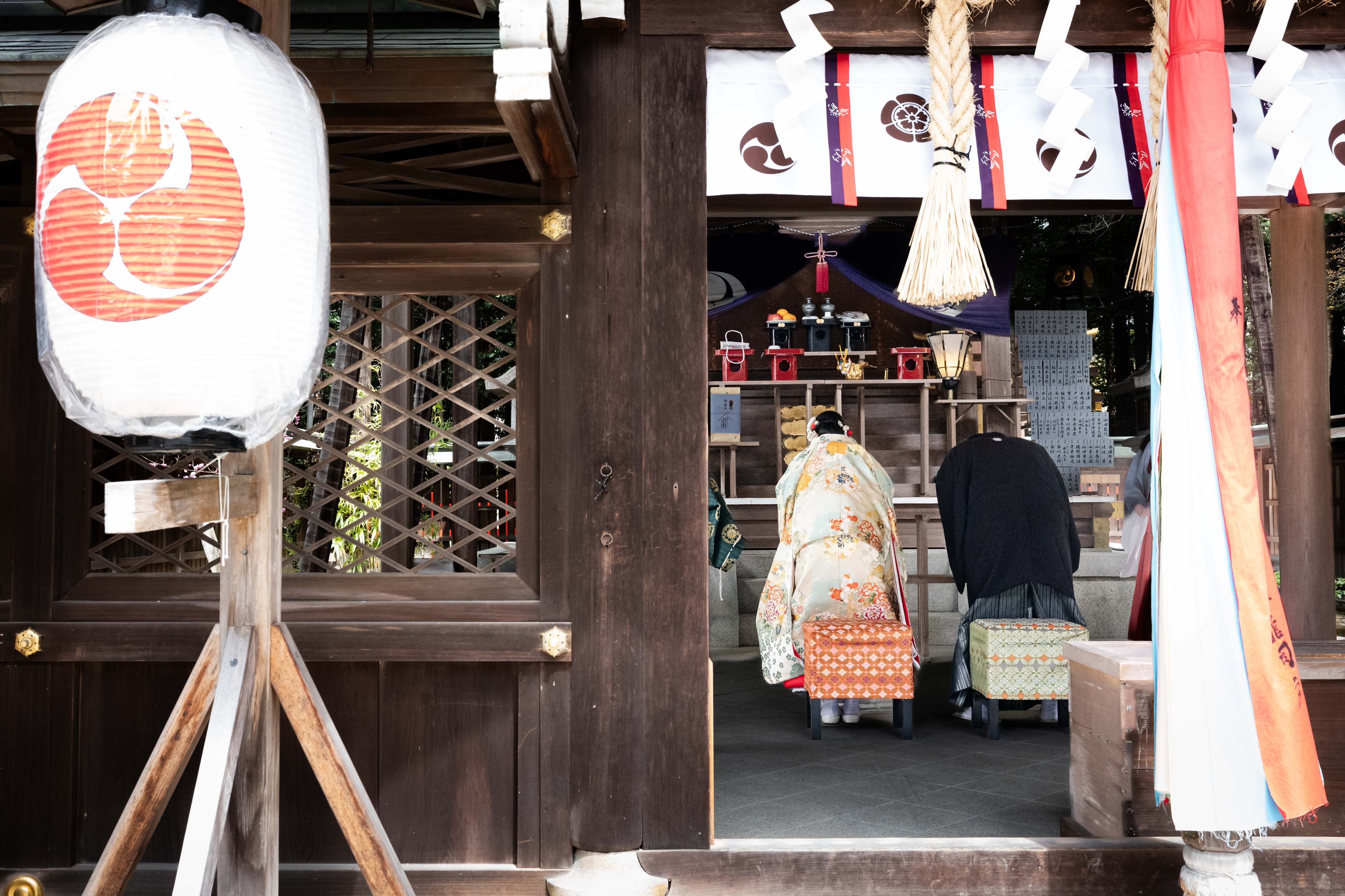
3.
Prayer
Norito-sojo 祝詞奏上
Now it’s time for the shinto ritual prayer reading or norito sojo (祝詞奏上). In this reading, the Shinto priest reads a ritual prayer to announce the marriage to the deities, and he will request blessings and protection for the newlywed couple. In the end, all your guests will stand and bow.
4.
Exchanging of Sake
San San Kudo 三献の儀(三々九度)
The next custom is the exchange of the cups or sankon no gi (三献の儀). The couple will exchange cups that contain sacred wine. The exchange happens 3 times while the couple takes 3 sips each time. This process is known as the san-san-kudo (三々九度). This is one of the core elements of Shinto weddings. The ritual supposedly represents sharing joys and sorrows equally, as a married couple.
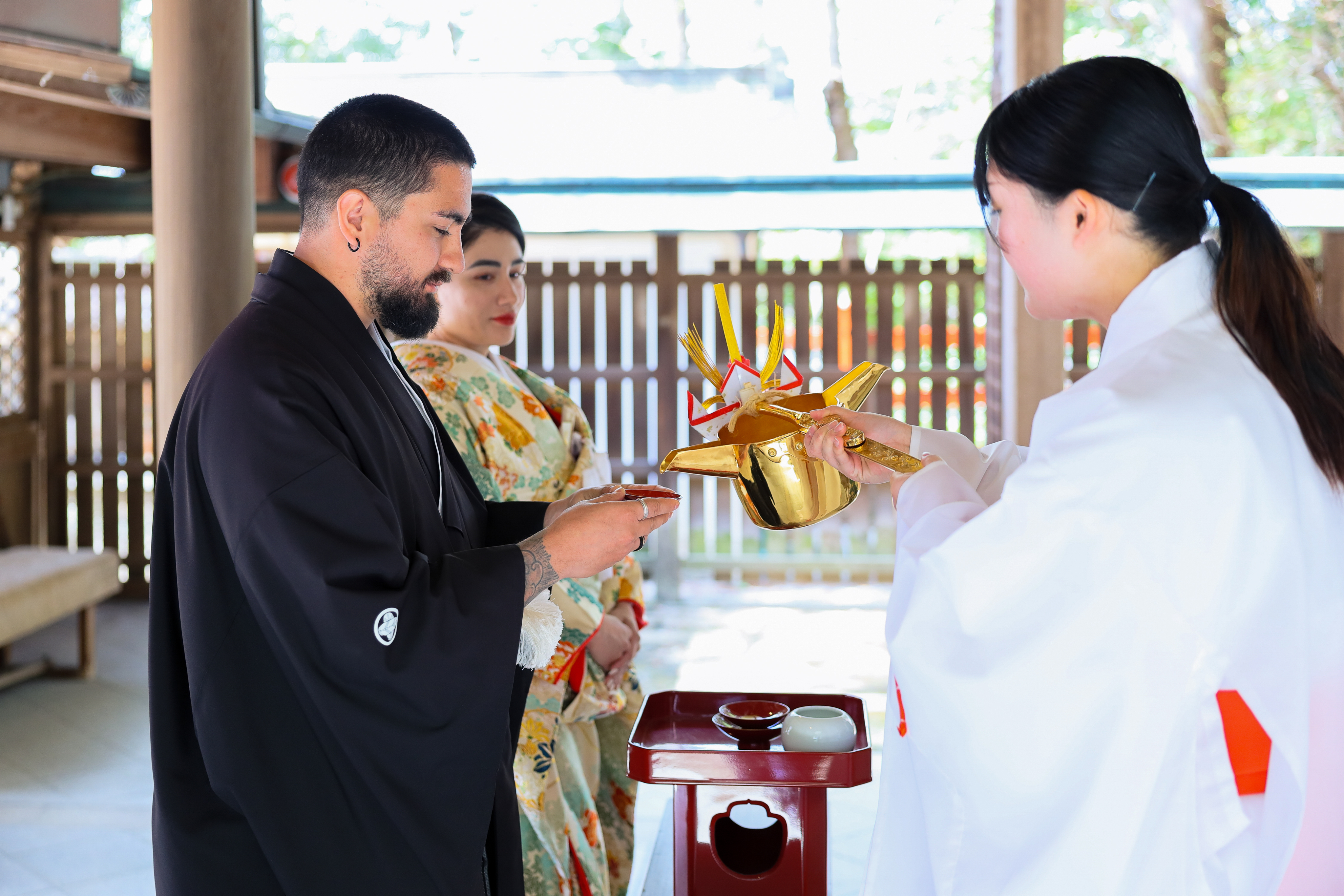
5.
Kagura hōnō (神楽奉納)
After that, Shinto maidens will perform an ancient Shinto dance combined with music as an offering to the god. This tradition is called kagura hōnō (神楽奉納). It will differ depending on the shrine you’ve chosen, but will be performed by the performers if hired.
6.
Wedding Vow
Seishi Sodoku 誓詞奏上
Then, the bride and groom will approach the altar and the groom will read the marriage vows while the bride adds her name to the vows. This is calles seishi sojo (誓詞奏上).
7.
Presenting the Sakaki Branch
Tamagushi Hairei 玉串拝礼
The bride and groom offer a branch of sakaki 榊 called a “tamagushi 玉串” and bow in the manner of “nirei-nihakushu-ichirei 二礼二拍手一礼 (two bows, two claps, one bow)” as an expression of gratitude and prayer. It is said that through the tamagushi, thoughts and feelings are conveyed to the gods.

8.
Exchanging of rings
Yubi-wa Kokan 指輪交換
Subsequently, the couple will exchange rings. After this exchange, or yubi-wa Kokan (指輪交換), the newlyweds will be drinking 3 sips of sacred wine with the wedding guests, emphasizing the celebration of this novel bond.

9.
Saishu aisatsu (斎主挨拶)
Finally, the saishu aisatsu (斎主挨拶) happens which is where the Shinto priest and the rest bow before the altar and exchange celebratory words.
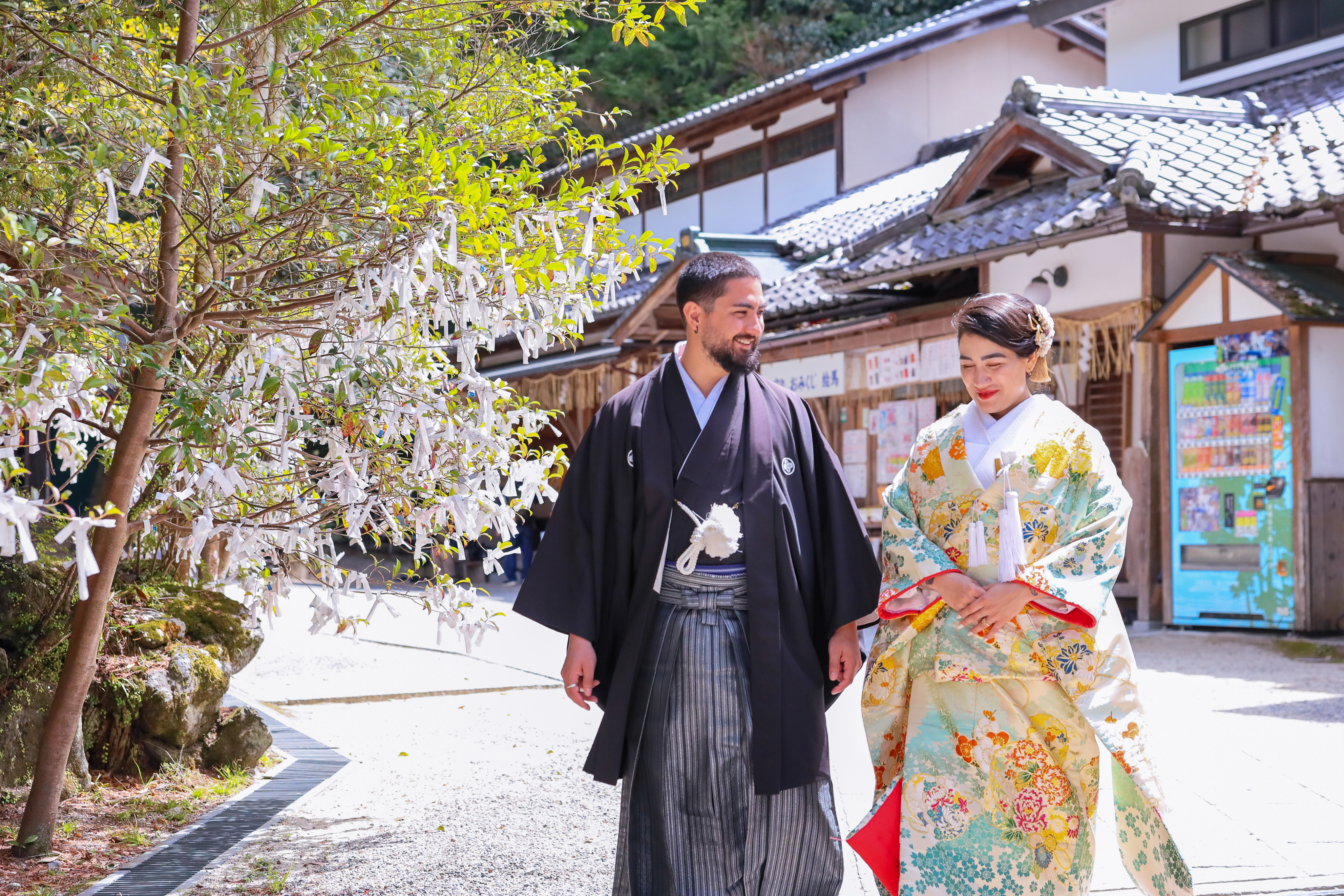
Inquire about available dates
CONTACT

